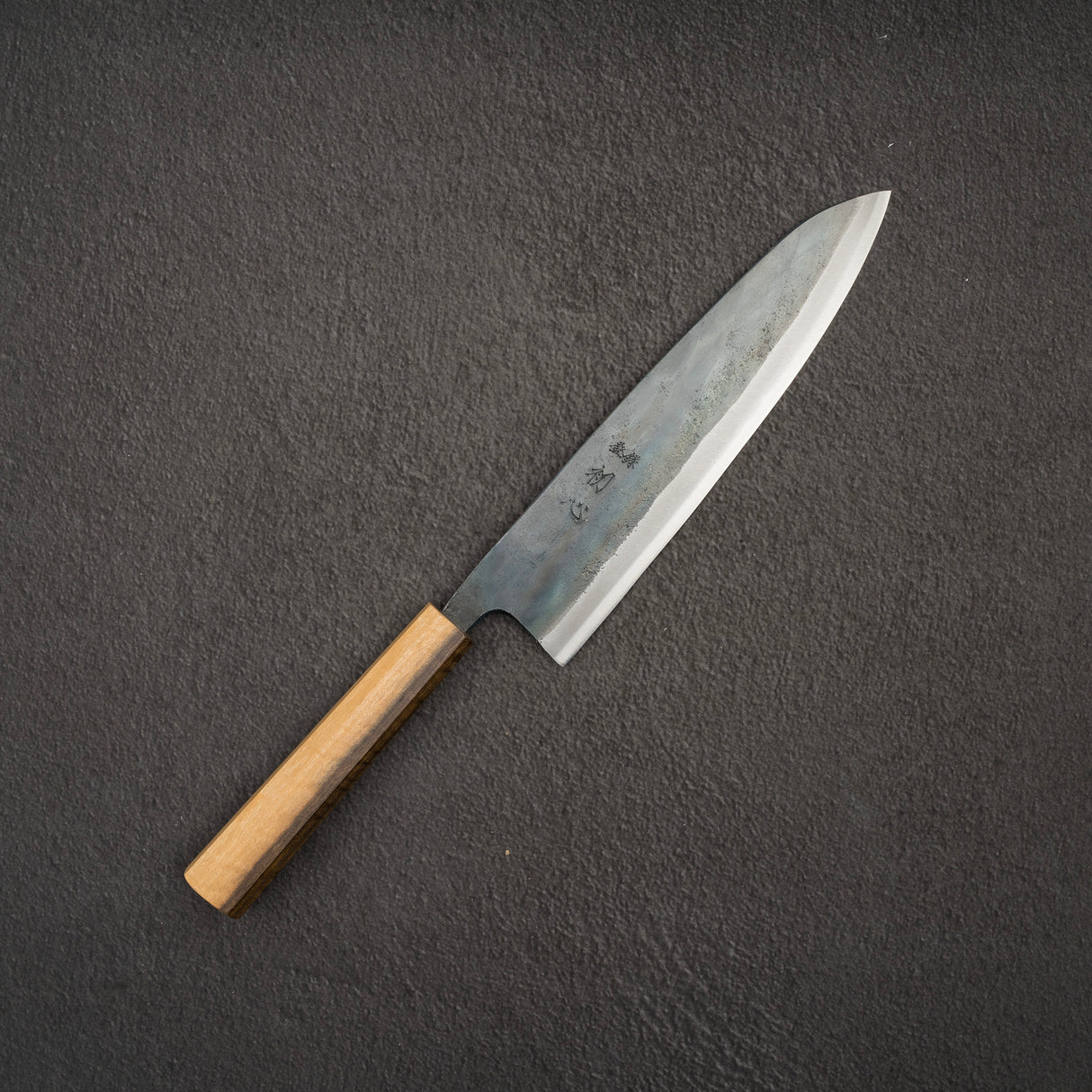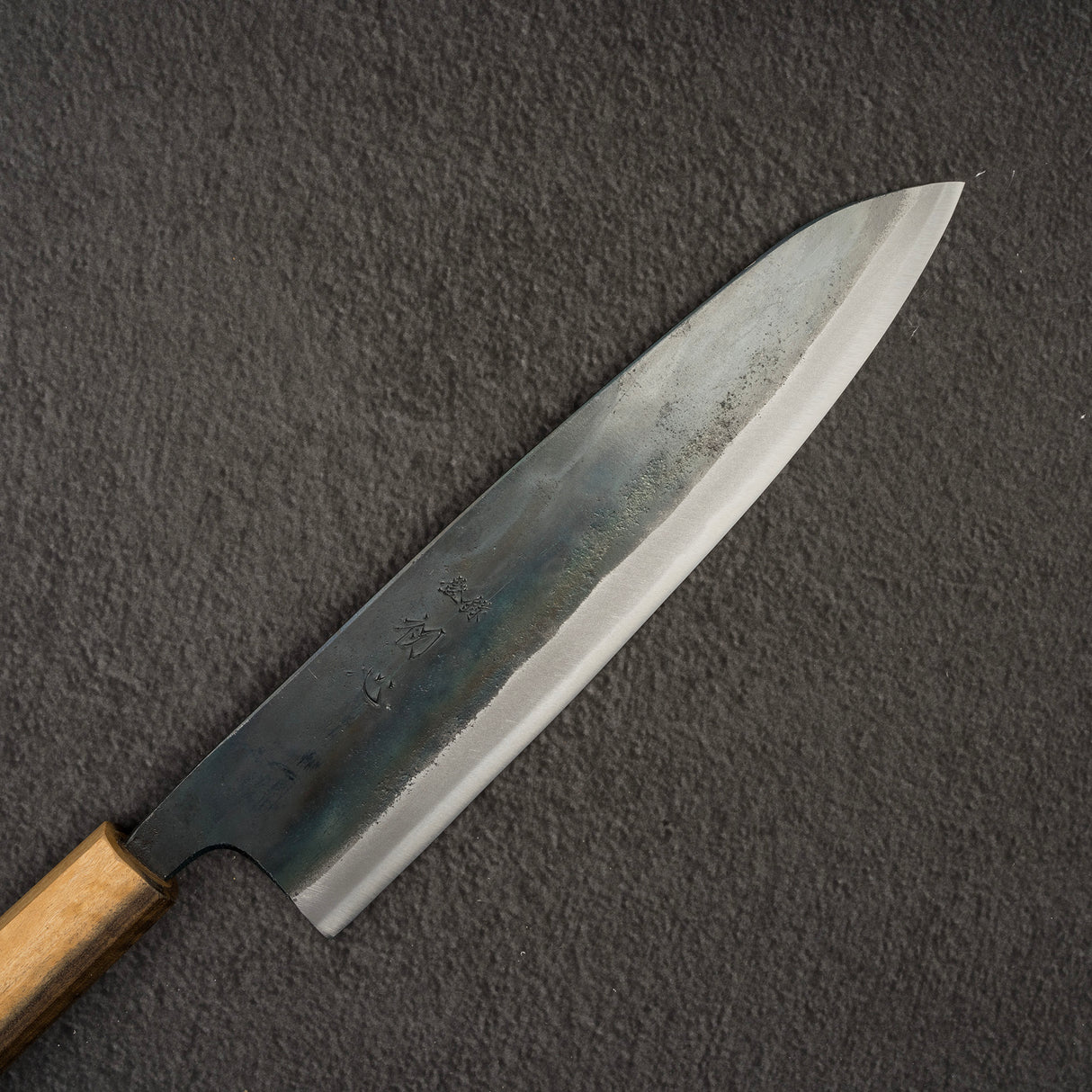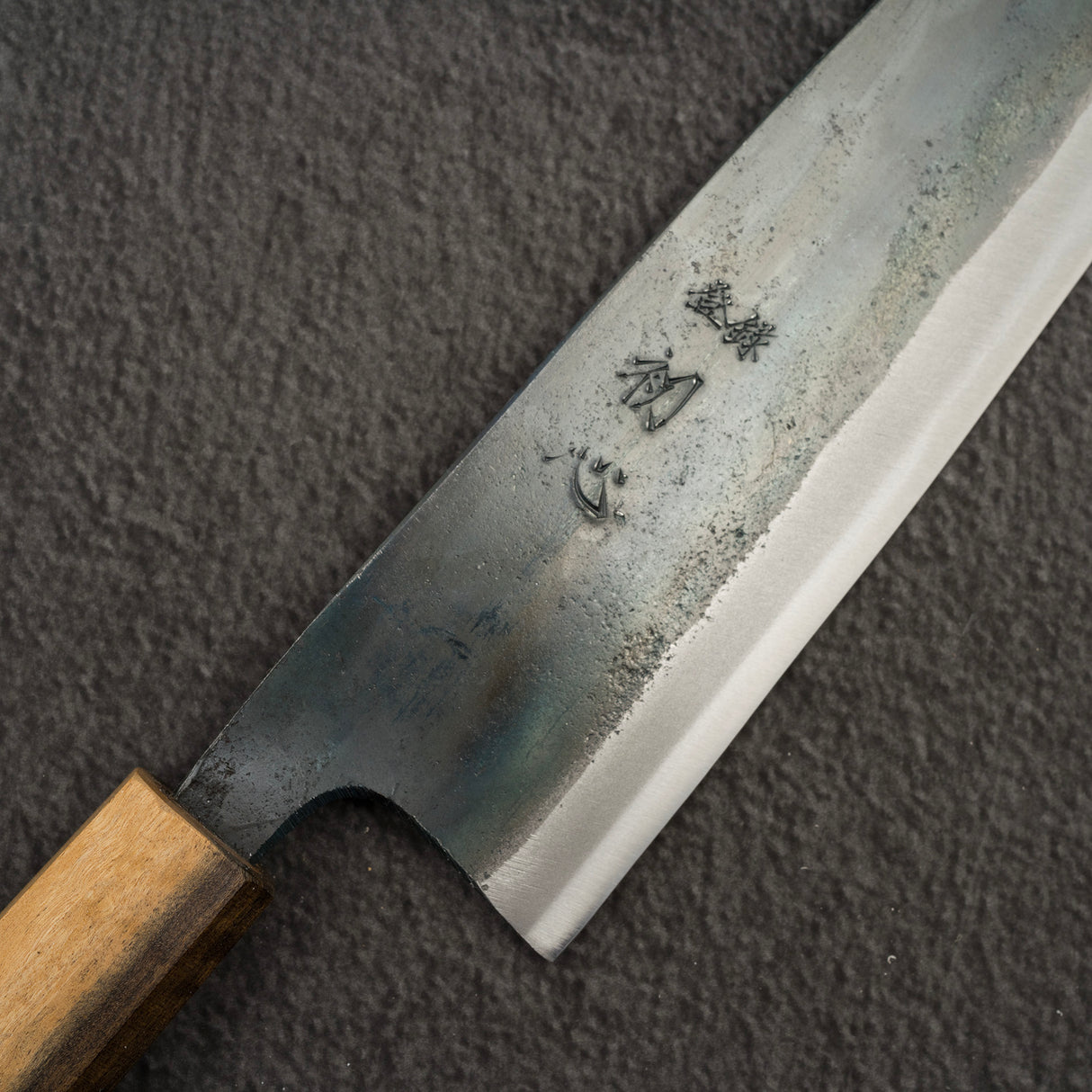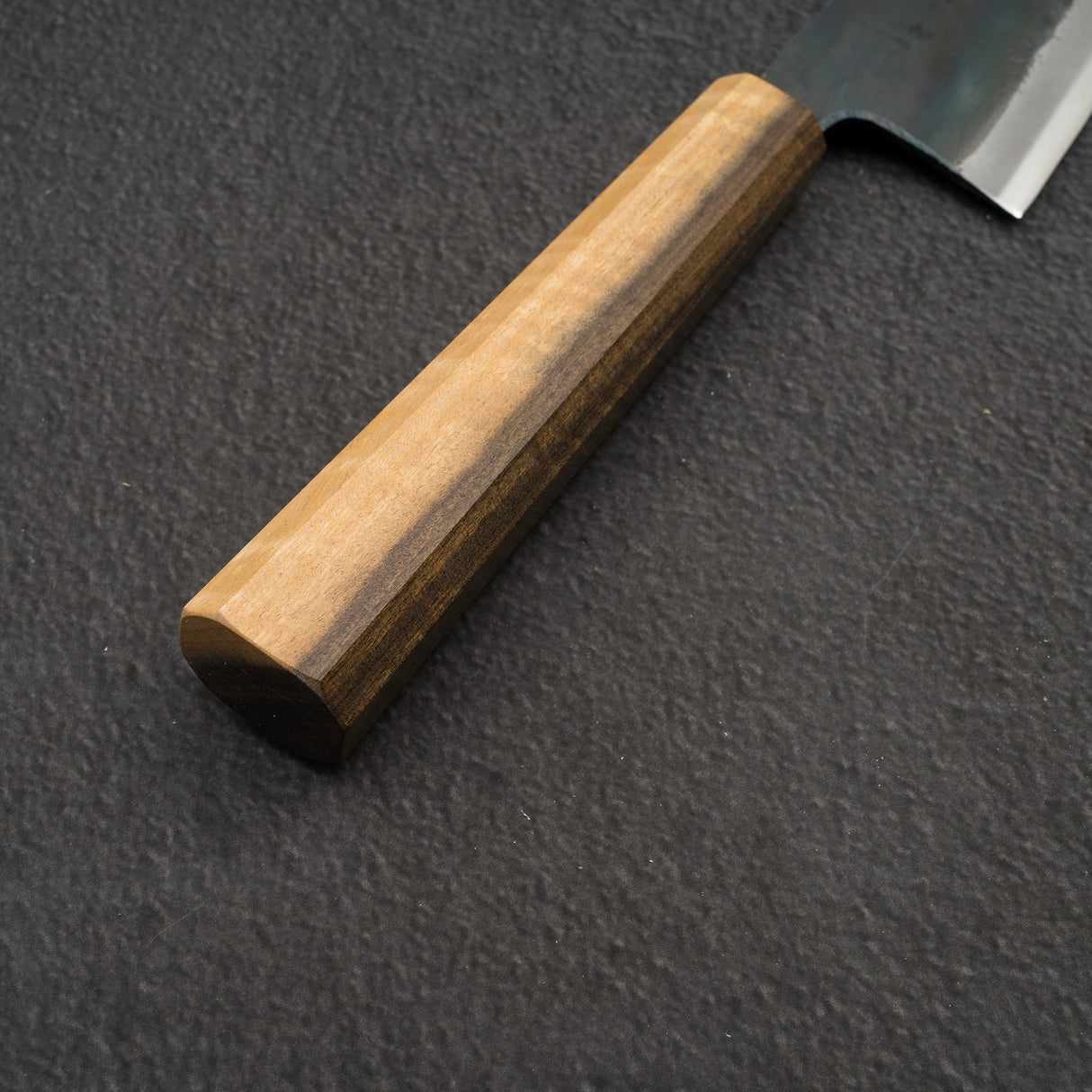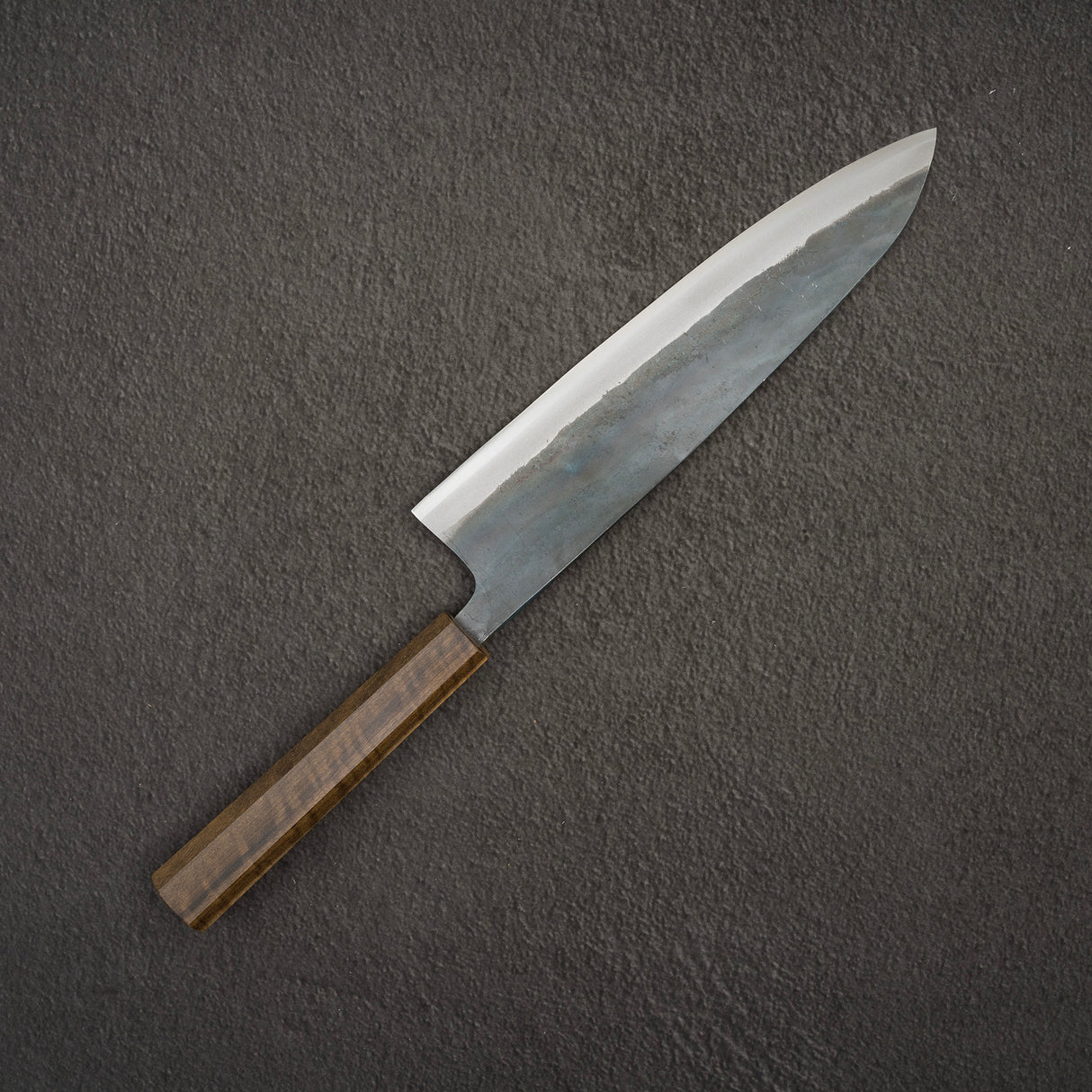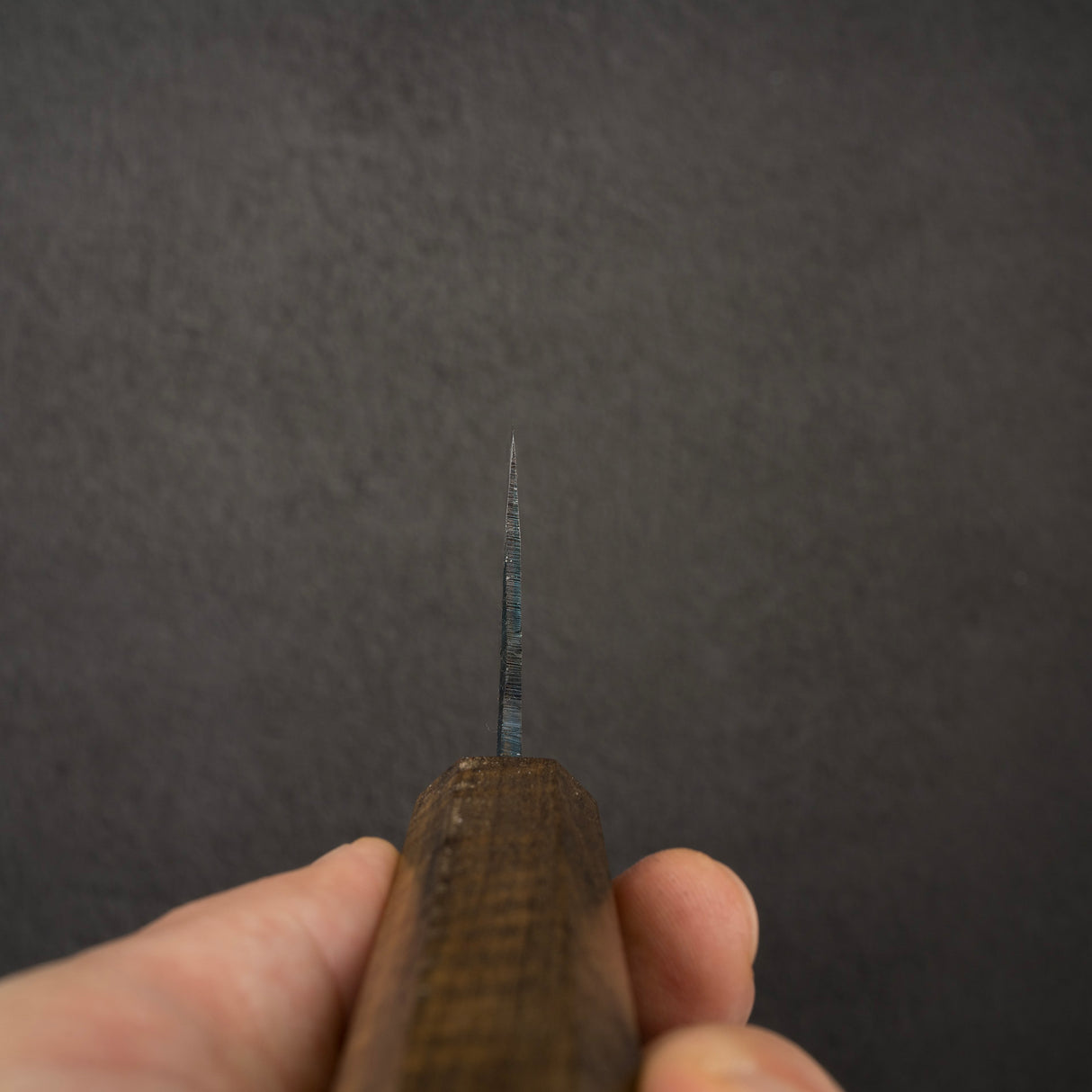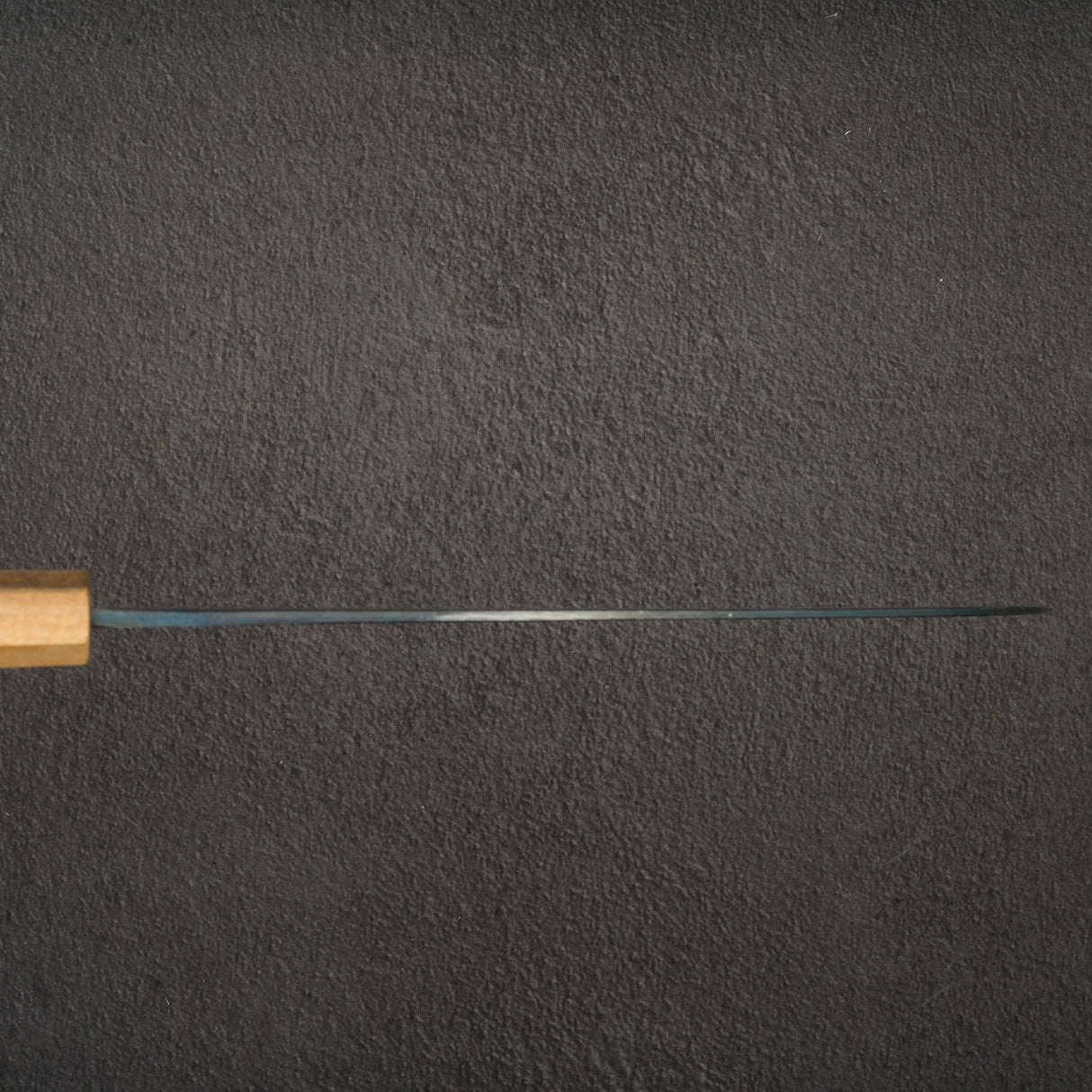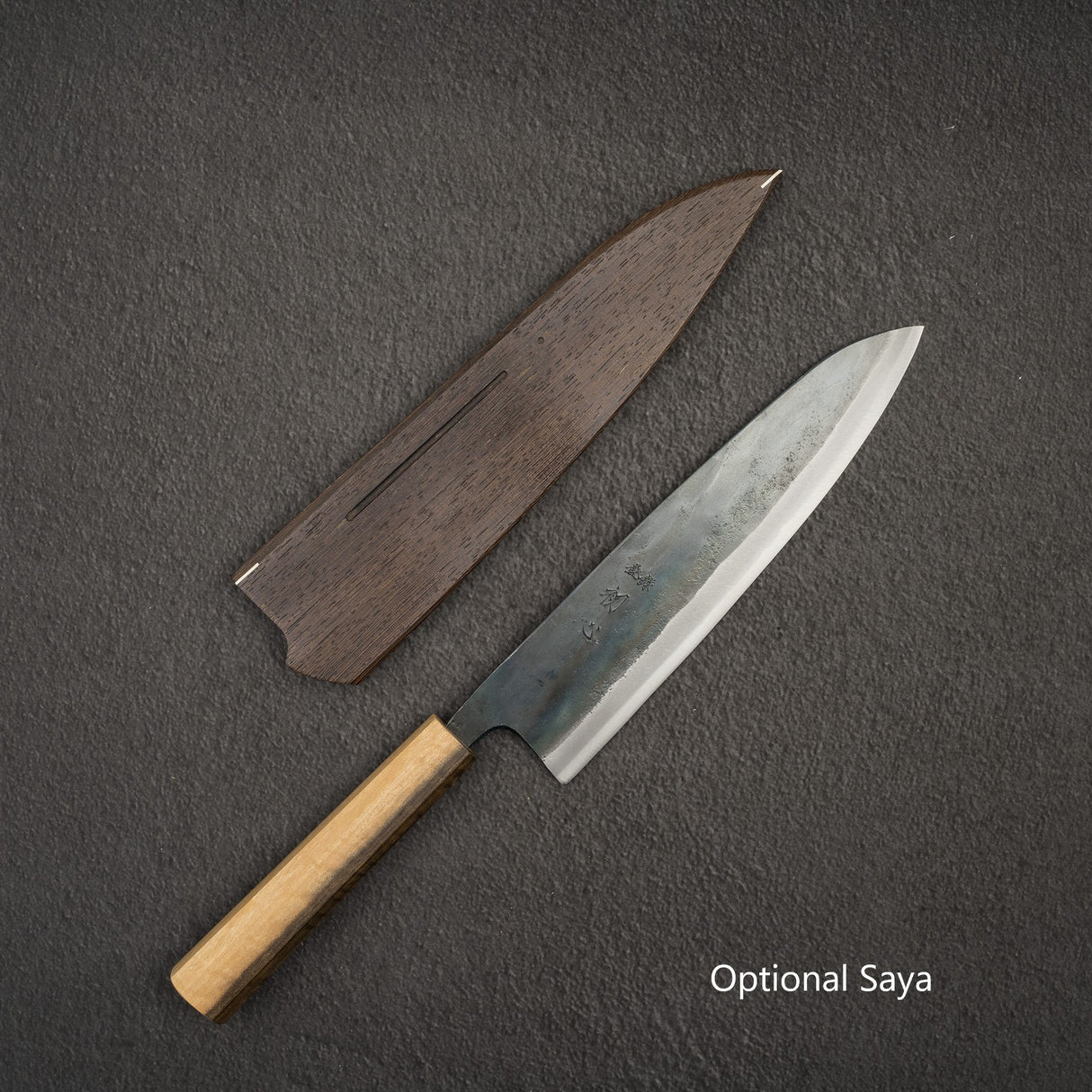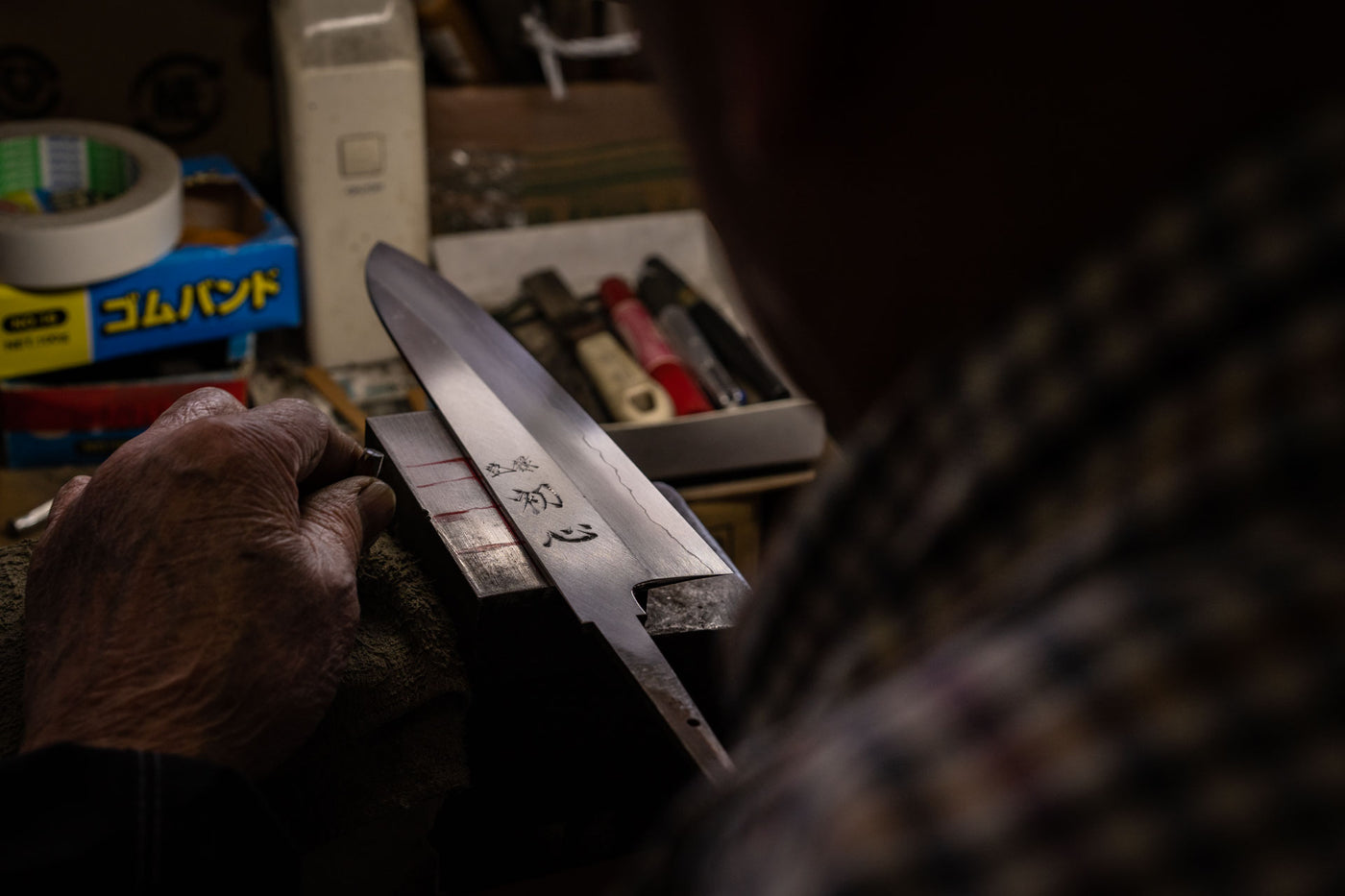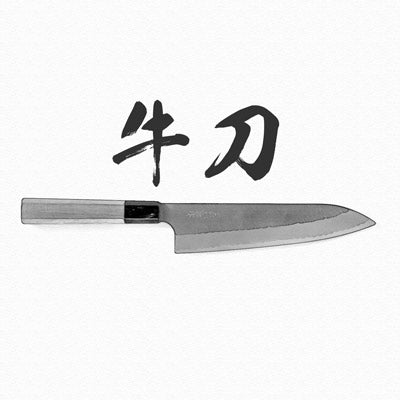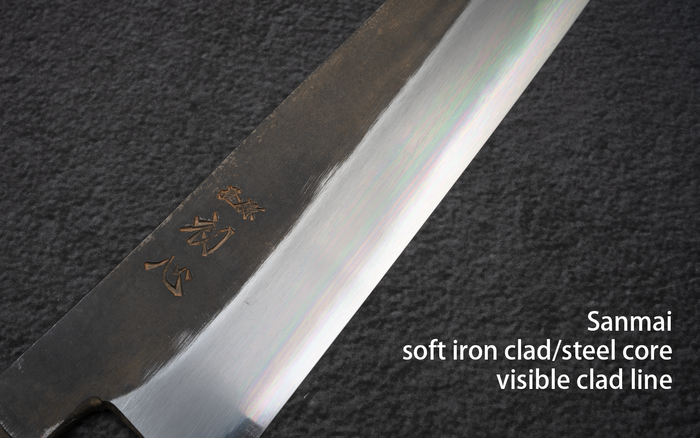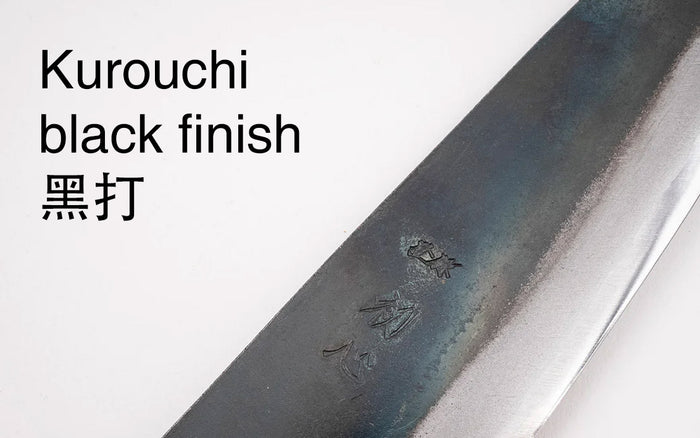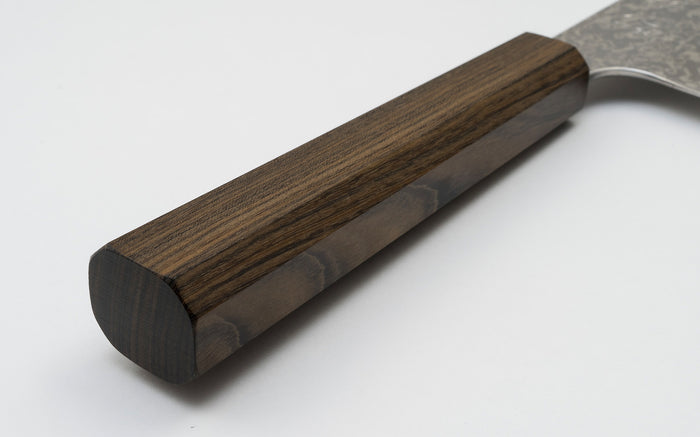Hatsukokoro | SKU:
HT-KSAGASSK-GY210
Hatsukokoro Kokugei Blue 1 Kurouchi Gyuto 210mm
$149.95
$169.95
Unit price
/
Unavailable
Tax included
Shipping calculated at checkout.
Hatsukokoro Kokugei Blue 1 Kurouchi Gyuto 210mm is backordered and will ship as soon as it is back in stock.
Couldn't load pickup availability
K&S Price: AU $149.95* inc. tax , vs:
| Chefs' Edge AU | AU $189.0 | -26.85% |
* For overseas buyers you pay no GST (10%) and low shipping rate.
Last Update: 2024-05-20T01:01:46Z
Detailed Specifications
| Line | Hatsukokoro Kokugei Blue 1 Kurouchi |
| Profile | Gyuto / Chefs Knife |
| Bevel Type | Double Bevel |
| Weight | 194 g 6.84 oz |
| Edge Length | 215 mm .8.46 inch |
| Heel Height | 50 mm .1.97 inch |
| Width @ Spine | 3.2 mm 0.13 inch |
| Width @ Mid | 2.5 mm 0.1 inch |
| Width @ 1cm from Tip | 1.9 mm 0.07 inch |
| Steel | Blue 1 / Aogami #1 | Carbon |
| Blade Construction | Sanmai - Soft Iron Clad |
| Hardness (HRC) | 61 - 64 |
| Surface Finish | Kurouchi |
| Handle | Octagonal Black Chacate |
| Region | Hyogo |
| Best for |
|

| Pros | Cons |
|
|
|
Care Instruction
- Don't cut hard things! Japanese knives are brittle so bone hacking is a NO NO!
- Wash with netural detergent after use, and wipe dry;
- Please don't wash knife with dishwasher, it will damage the wood handle;
- Be careful not to leave the knife close to a heat source for a long time;
- It is a lot more dangerous to cut with a blunt knife than a sharp knife!
- It is best to sharpen a Japanese knife regularly on a waterstone.
- Oil the (carbon) knife if storing for an extended period of time to prevent rust.

